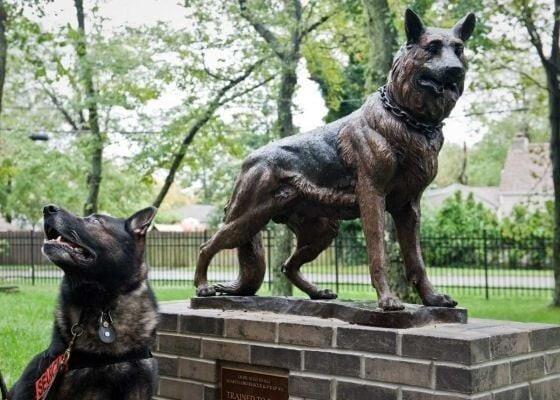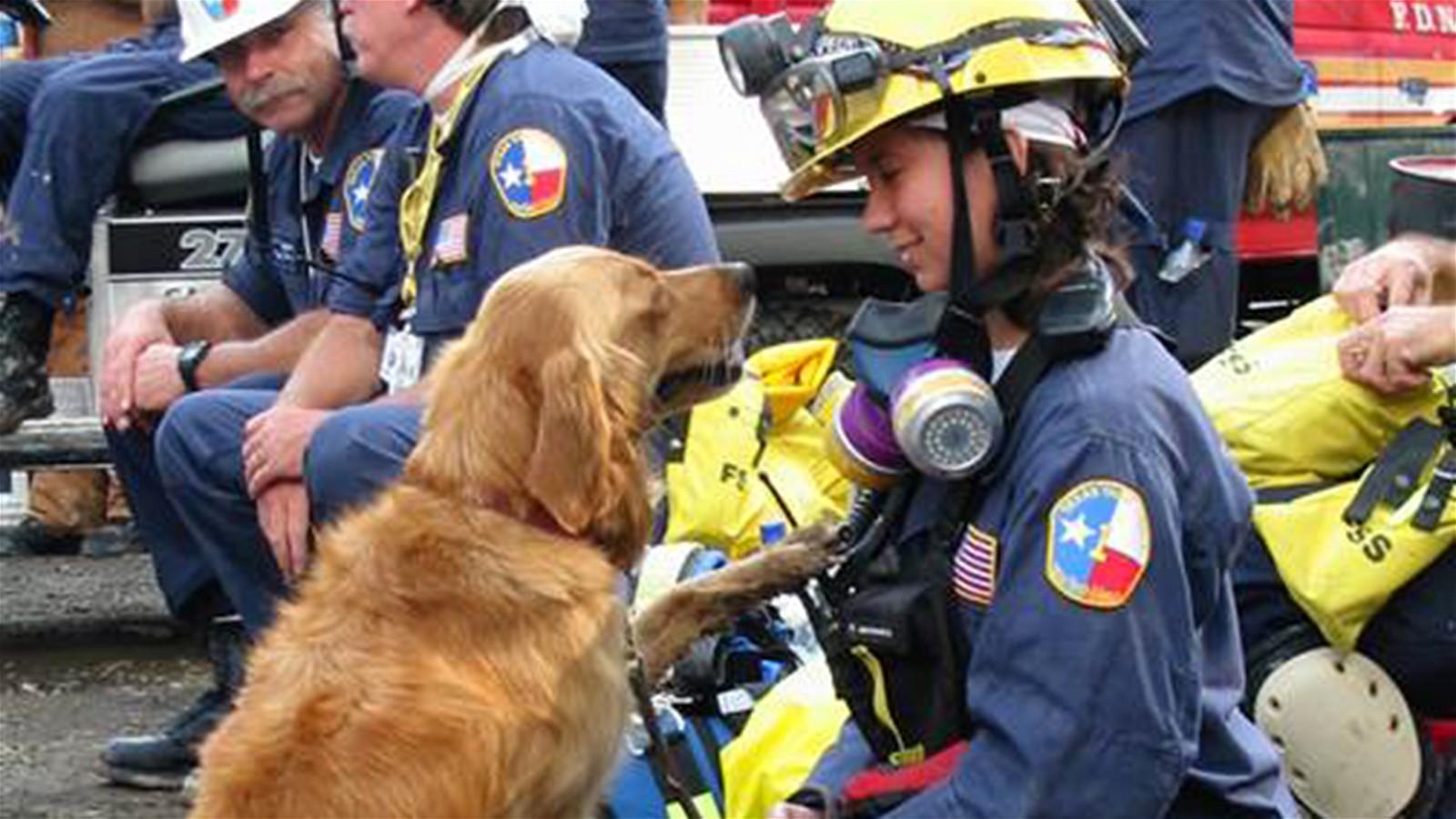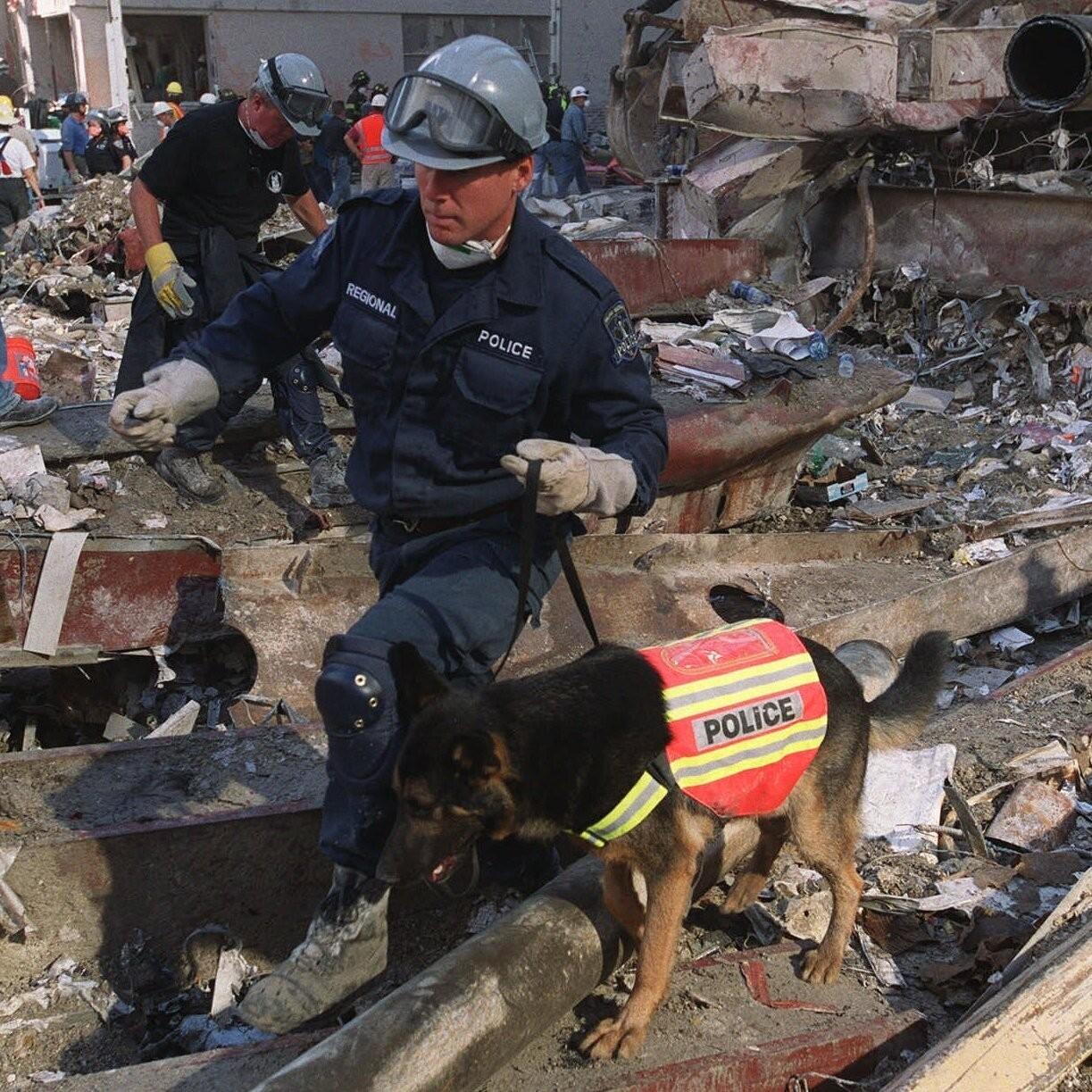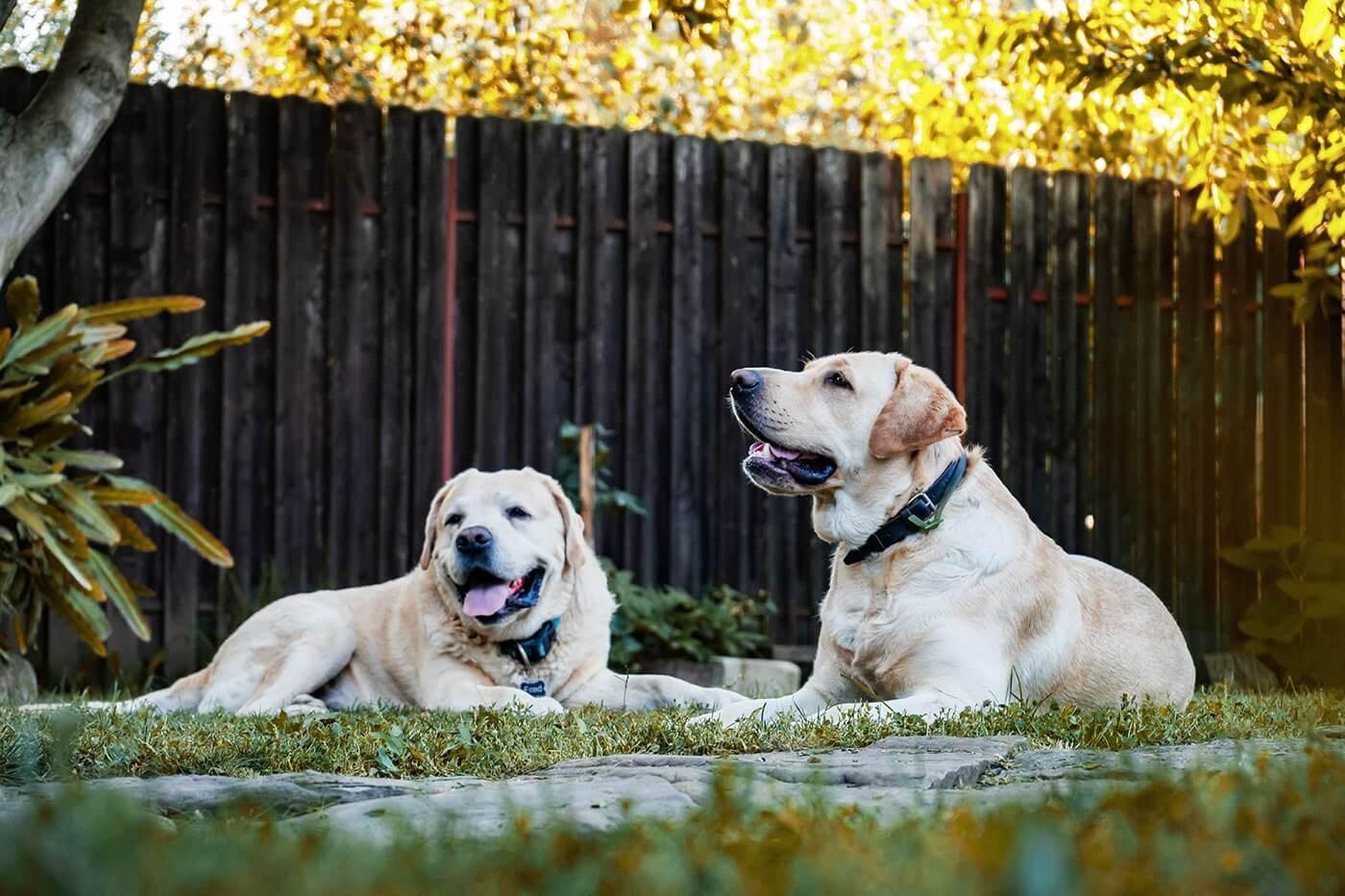On the fateful morning of September 11, 2001, America changed forever. Nineteen Al Qaeda terrorists hijacked four commercial planes and flew two of them into the Twin Towers of the World Trade Center. A third plane crashed into the Pentagon and a fourth in rural Pennsylvania after the crew and passengers on board attacked the terrorists and prevented it from hitting their original target, thought to be the White House.
Shortly after this attack, roughly 10,000 emergency rescue workers fled to the scene to help. Of these heroes, more than 300 were dogs. These dogs performed search and rescues, looked for explosives, and provided comfort for those who needed it, among other things. The stories of their bravery and healing are something to be remembered forever as their legacy lives on. Continue reading to meet some of the four-legged heroes that were on the scene.
Meet the Heroes
Appollo
Appollo, a German Shepherd, was an NYPD Canine Special Operations Division graduate at just two years old. The shepherd was one of the top dogs for New York City throughout the 1990s. Appollo and his handler, Peter Davis, were the first K-9 search and rescue team to reach the South Tower crash site, just 15 minutes after its collapse.
Appollo worked relentlessly to look for survivors. He worked 18 hours a day for weeks, earning him one of the first AKC Humane Fund Awards for Canine Excellence in 2001.

Bretagne
Bretagne, pronounced Brit-nee, was the last living search and rescue dog who worked at Ground Zero. She passed away at the age of 16, where she had her owners by her side and was saluted by representatives from the armed forces and local fire departments.
Bretagne and her handler, Denise Corliss, worked 12-hour shifts for 10 days straight following the 9/11 attacks to search and rescue survivors. Bretagne was only two years old during this time.
Corliss began training Bretagne for search and rescue missions at just eight weeks old. This duo continued to do amazing work and were on site during Hurricanes Katrina, Rita, and Ivan. When she retired from these missions at age 9, she continued to work as both a goodwill ambassador for her local fire department and as a reading assistance dog at her local elementary school.

Coby and Guinness
Coby and Guinness were a pair of Labrador retrievers who were thrown into situations that were larger and more crowded than they had ever been trained for. They searched for 11 days straight in 12-hour shifts and were able to recover the remains of dozens of people in the rubble.
Even amongst the noise and chaos going on around them, these dogs did exactly what they were trained to do. Both went on to continue their search and rescue careers post 9/11 and helped out after many different natural disasters
Jake
Mary Flood adopted Jake after finding him on the streets, suffering from multiple injuries at only 10 months old. Mary nursed him back to health and then began training him as a search and rescue dog. He excelled in this position and joined the US government-certified organization, Search and Rescue Dogs of the United States. This was an elite group of highly trained dogs that were qualified to handle disasters of all kinds and were on call 24/7.
Following the 9/11 attacks, Jake worked for 17 days straight to recover victims of the attack. Throughout these 17 days, Jake had to navigate through many hazards such as fires, sharp debris, and smoky air.
As Jake got older, he began volunteering as a therapy dog for young burn victims and frequently visited senior homes and hospitals to boost morale and provide support.
Riley
Riley, a search and rescue golden retriever, was part of the Pennsylvania Task Force 1. He searched tirelessly for survivors and iconic photos taken of him being transported alone through the on-site debris quickly became a beacon of hope at Ground Zero. These images and his relentless searching brought comfort and motivation to the thousands of rescue workers at the site.
When Riley passed in 2010, he helped inspire a study on the long-term effects that rigorous search and rescue can have on a dog’s health.
Sage
Sage was born to be a search and rescue dog. She became FEMA-certified at only 18 months old and quickly became one of the nation’s top 50 dogs in the search and rescue field. Her first real mission was at the Pentagon. Sage was able to sniff out the body of the terrorist who had flown Flight 77 into the building.
After 9/11, Sage continued her work by rescuing animals stranded by Hurricane Rita and Hurricane Katrina. She was deployed to Iraq in 2007. Upon retiring, Sage was honored with the 2009 Search and Rescue Aware for Canine Excellence.
Trakr
Trackr and his handler, James Symington, were able to discover the last survivor of the September 11 attacks. Survivor Genelle Guzman-McMillan had been making her way down the stairs when the building collapsed around her. She was trapped for 27 hours beneath the concrete and rubble until Trakr was able to alert the firefighters to her location, saving her life.
Before Trakr passed away in 2009, his DNA was entered into and won a DNA cloning review. In June of that year, five Trakr clones were born! All five of these puppies, Trustt, Solace, Valor, Prodigy, and Déjà vu, are continuing his legacy by working as search and rescue dogs.

Who was the last surviving search dog from 9/11?
The last surviving search and rescue dog who worked at Ground Zero was a Golden Retriever named Bretagne. Sadly, Bretagne passed away in 2016 at the age of 16.
Did serving at Ground Zero affect the long-term health of the SAR dogs?
There were initial concerns about the long-term health of search and rescue dogs (SAR) who worked at Ground Zero due to exposure to dust and debris. However, studies have been conducted to investigate this. Researchers compared the causes of death for 95 search and rescue dogs deployed to 9/11 sites ("exposed dogs") to 55 dogs not deployed ("non-exposed dogs"). The study concluded that there is a low long-term health risk for these canine heroes.
Remembering the heroes
The roughly 300 search and rescue dogs on site at 9/11 ranged from wilderness to avalanche to rescue dogs. Few were trained for attacks like the one at 9/11, yet they persevered through noisy, dangerous environments, long hours, and weeks of work to find survivors and recover remains. Although morale was undoubtedly low, these dogs were a beacon of hope in an
otherwise bleak environment and helped our human workers stay strong throughout the catastrophe. Dogs like Riley, Trakr, Sage, and more worked tirelessly to help piece America back together and our country will never be able to thank them enough. Their service alongside the hundreds of other 9/11 search and rescue dogs will certainly never be forgotten.

As Spot’s resident cat enthusiast, I am dedicated to researching and sharing information that helps pet owners take the best care of their pets. Pet ownership comes with it’s share of challenges, but my goal is to help make this journey easier.












